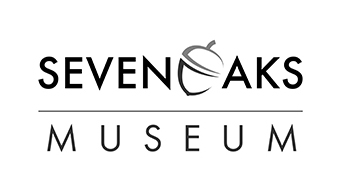Sevenoaks museum is home to large collections of hats from the 20th to 21st centuries.

Fire Brigade Helmet
This helmet was worn by Firemen towards the end of the Victorian era as it was not introduced until 1901. This helmet was made by Merryweather & sons Fireman’s Outfitters, London and had a downward swept back and visor along with a leather chin strap underneath a brass chain. However, if you were part of the voluntary fire brigade you were reliant on money from local people to buy uniforms or equipment.

Prisoner of war hat
World war one lasted four years starting in 1914 and ended in 1918, it held some of the most famous battles such as Battle of the Somme and saw a development in aircraft warfare. Across the four years there were nine million prisoners of war with around 200 000 being British and there are only 11,147 official British soldiers’ deaths recorded in German captivity, but the real number is estimated to be much higher. Prisoners in the German camps suffered harshly with minimal food and poor clothing. Soldiers who maintained their uniform often lost their boots and coats whereas some received dark blue prisoners’ uniforms sent from the red cross which this hat would belong with.

Women’s munition hat of World War one
World war one offered the opportunity for more women to start work within factories as more men were called into the workforce. These women were often referred to as munitionettes or canary girls as they stepped into meet the government demands for munitions and it was thought that four million women were employed in Britain by July 1916. These hats were important to ensure that their hair stayed out of machines but also for the canary girls it was hoped that it would reduce the yellow staining from packing shells with trinitrotoluene (TNT).

Baron of Penshurst page boy hat
This black tricorn hat with gold trim and red feathers was worn by George Hardinge (3rd Baron Hardinge of Penshurst) as a page boy at the coronation of King George VI in 1937. George was fifteen at the time of the coronation and did not resume the role of Baron until 1960.

Pembury hospital wartime helmet
Despite starting as a workhouse in 1836 and did not official become Pembury County hospital until 1938. World War two Pembury hospital was heavily used, helmets like this were worn by many civilian war workers which included fireguards and ambulance drivers. In 1940 Pembury hospital had the outpatient department being reduced to rubble in a German air raid. Most of the old parts of the hospital were demolished in 2010 and rebuilt as Tunbridge Wells Hospital.

RAF ordinary airman’s forage cap
This World War Two RAF side cap with a brass King’s crown cap badge on the left-hand side and two brass King’s crown badges on the front was brought in just before the second world war. These badges were standard at the start of WW2 and this hat style is an iconic piece of clothing of the RAF in wartime. However, in 1943, the buttons change to black as economic pressure as more money was reduced from uniforms and into other sectors.

WW2 Kings regiment British Army Officers khaki side cap
This WWII khaki side cap with bronze badge and pins was from the King’s’ regiment of British army officers. The King’s regiment was made up of many battalions from all areas of Britain including Lancashire and Liverpool.

Royal Engineers Parachute Regiment Officer’s beret with badge
This World War two royal engineers parachute regiment officer’s beret with badge was used between 1940 -1945 and consists of red felt cloth with cotton khaki lining. It still has the embroidered cap badge, but it’s slightly faded over time. The parachute regiment is still active and King Charles III in 1977 was appointed colonel in chief of the parachute regiment as well as in 1978 completing the training course.

Second world war civil defence corps rescue helmet
This second world war British military steel helmet is marked with a white R at the front to highlight that the person wearing it is part of the rescue corps. It was created in 1935 as a precaution to air raids but its name did not officially change to civil defence until 1941. Over 1.9 million people served in the civil defence and 2,400 lost their lives. Rescue parties would assess damage and retrieve people from buildings during air raids.

2012 Olympics cap
One of the younger additions to the museum is the 2012 adidas London summer Olympic cap. This hat was given to us by the Davies family whose son was a marshal in cyclist events. The London Olympics games was held from the 27 July to 12 August and 10,518 athletes competed for the chance to win gold. The 2012 Olympics made history as it was the first modern city to hold the games three times due to previously hosting in 1908 and 1948. The United States dominated the games with 108 medals however Britain came in third with a total of sixty-five medals and twenty-nine of them were gold.
Blog Piece written by Ashleigh Cox whilst on work experience placement.

